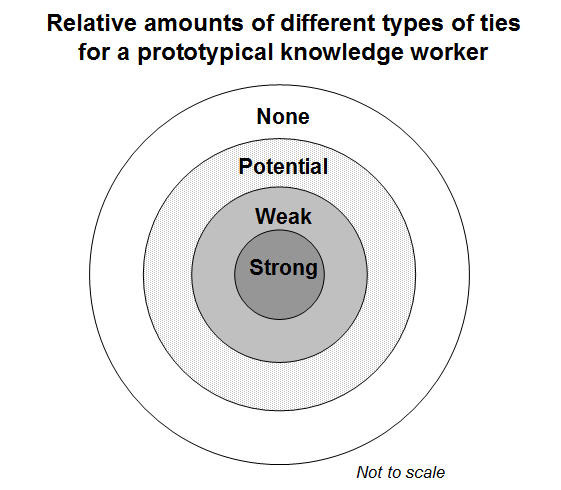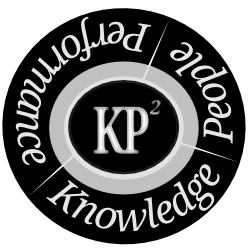I mentioned Andrew McAfee and his book ‘Enterprise 2.0’ in an earlier blog post and would like to come back to him now. In Chapter 4 of his book, Andy introduces the notion of the Enterprise 2.0 Bullseye (see below graph). The logic of the bullseye builds on Granovetter’s (1973) and Burt’s (1992) work on the strength of weak ties and structural holes. Andy argues that the bullseye helps to focus Enterprise 2.0 efforts by distinguishing the different types of ties between people, or employees, and how these ties may be maintained or altered by the use of social software (which he calls ESSPs). Cooperation between close colleagues, or strong ties, may be facilitated by wikis, whereas social network sites are more suitable to maintain a large network of acquaintances, or loose ties. Blogs, in turn, are seen to be enablers for converting potential into actual contacts. Last but not least, there are forms of cooperation, for example in the case of prediction markets, when no tie between actors is present and yet the individuals involved can productively interact. There are a number of other studies that investigate the impact of ICT on social capital, yet Andy manages to match ties and technologies. This is an interesting step forward.
How to Hit the Enterprise 2.0 Bullseye by @amcafee

Granovetter, M. S. (1973). The strength of weak ties. American journal of sociology, 78(6), 1360.
McAfee, A. (2009). Enterprise 2.0: New Collaborative Tools for Your Organization’s Toughest Challenges. Harvard Business School Press.

